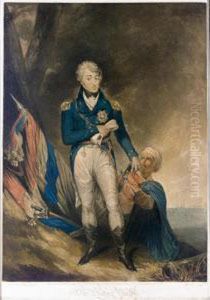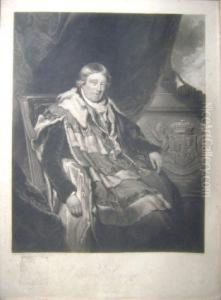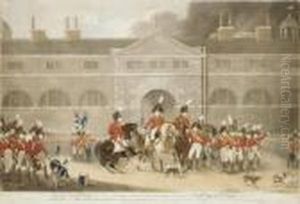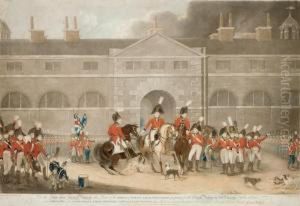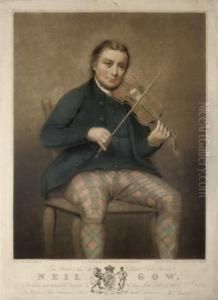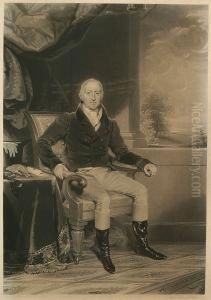William Say Paintings
William Say was a notable English mezzotint engraver born in 1768, whose work contributed significantly to the art scene during the late 18th and early 19th centuries. His mastery in mezzotint, a printmaking process that allows for the creation of images with a wide range of tones, made him a sought-after engraver of his time. Say's career and artistic output offer a glimpse into the period's aesthetic preferences and the technical challenges of printmaking.
William Say's early life is not extensively documented, but it is known that he apprenticed under the renowned mezzotint engraver James Ward. This apprenticeship was crucial in honing his skills and establishing his reputation in the art world. Say's work primarily involved creating mezzotints after the paintings of contemporary and historical artists, thereby playing a pivotal role in disseminating the works of painters to a broader audience. His engravings included portraits, landscapes, and historical scenes, reflecting the era's artistic interests.
Throughout his career, William Say engraved works after some of the most celebrated painters of his time, including Sir Joshua Reynolds and George Romney. His ability to capture the nuances of the original paintings and translate them into engaging mezzotints was highly praised. Say's work was not only appreciated by the art connoisseurs of his time but also contributed to the popularization of mezzotint as a respected and desirable art form.
In addition to his artistic achievements, William Say was also involved in the Royal Academy of Arts, reflecting his status within the artistic community. His contributions were recognized by his peers, and his works were exhibited, allowing a wider public to engage with his art.
William Say passed away in 1834, leaving behind a legacy as one of the foremost mezzotint engravers of his generation. His work continues to be studied and appreciated for its technical proficiency and its role in the art historical narrative of printmaking. Say's engravings remain a testament to the skill and artistic sensitivity required to excel in the demanding medium of mezzotint, marking him as a significant figure in the history of English art.
